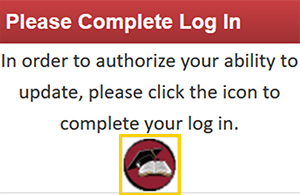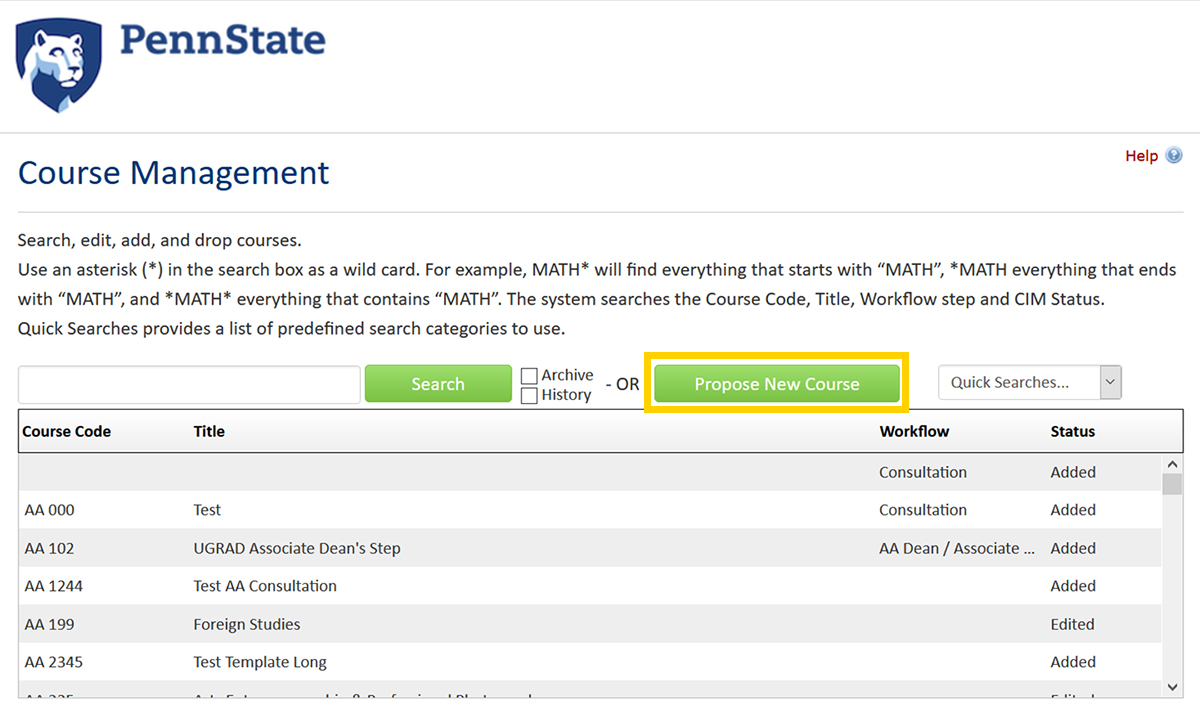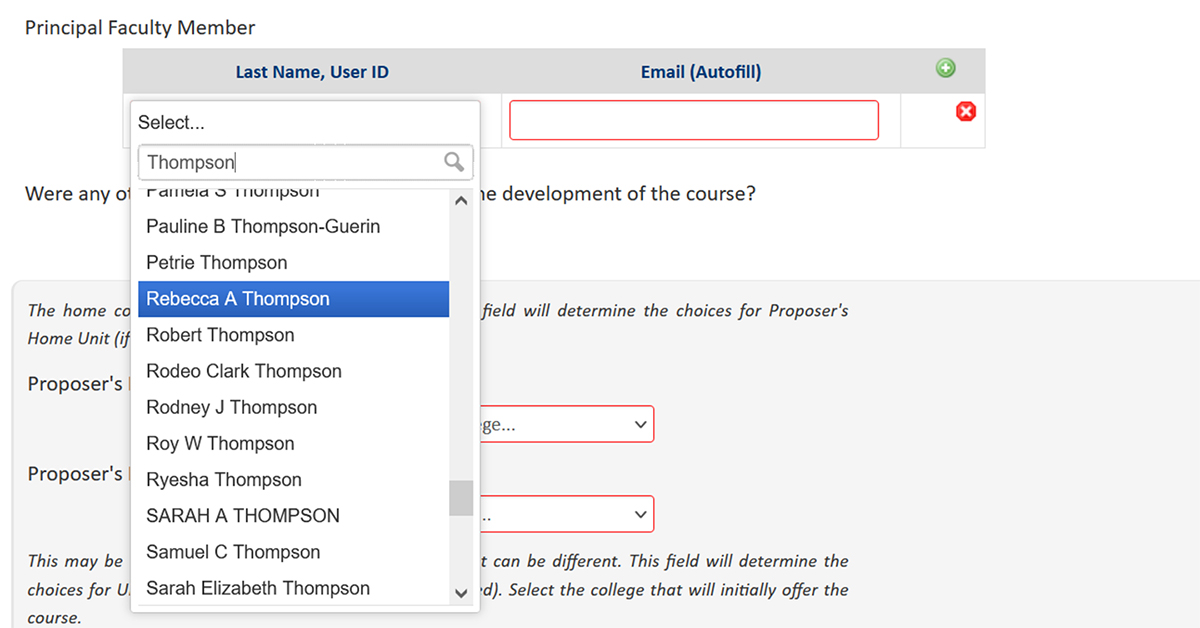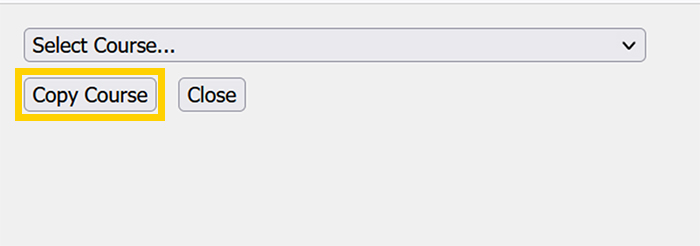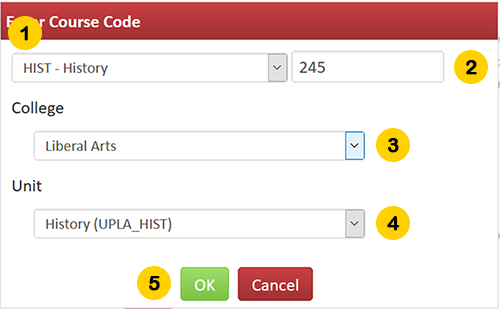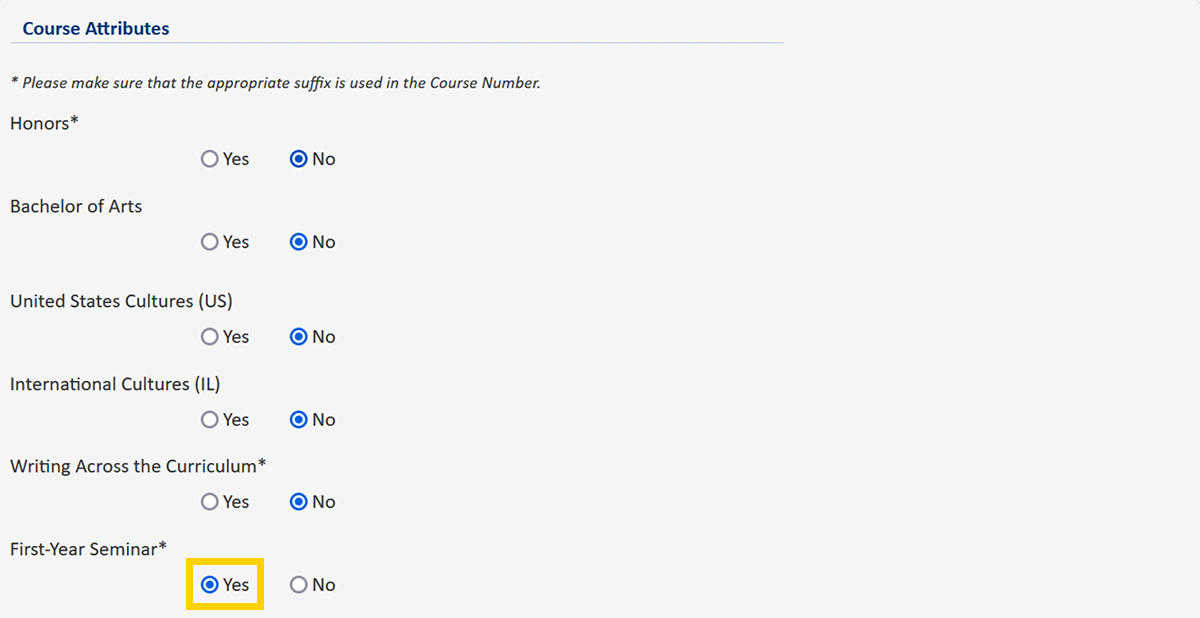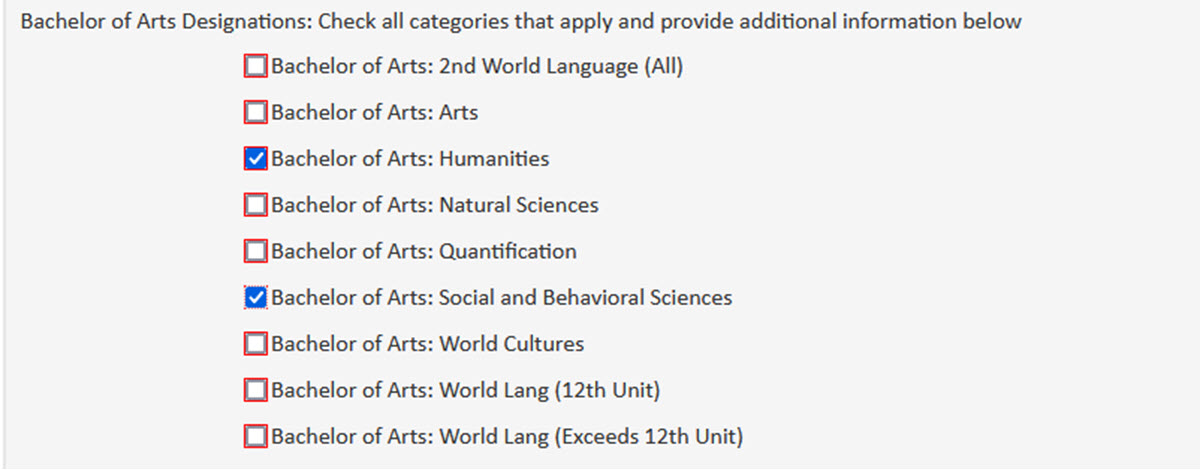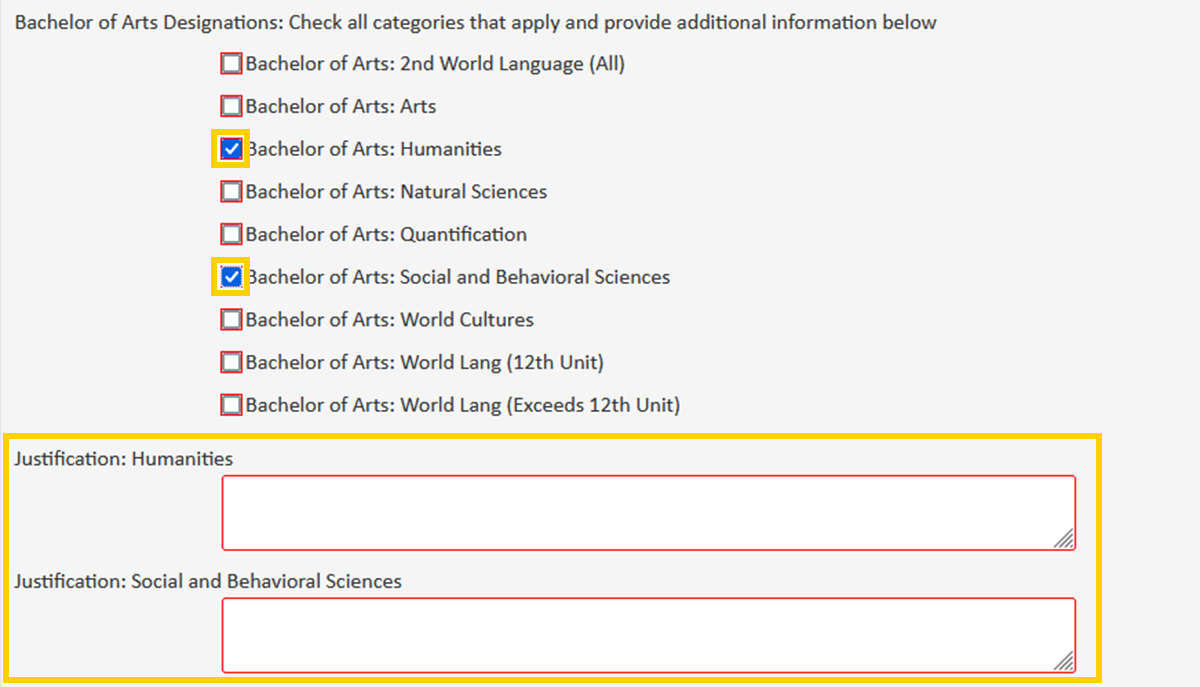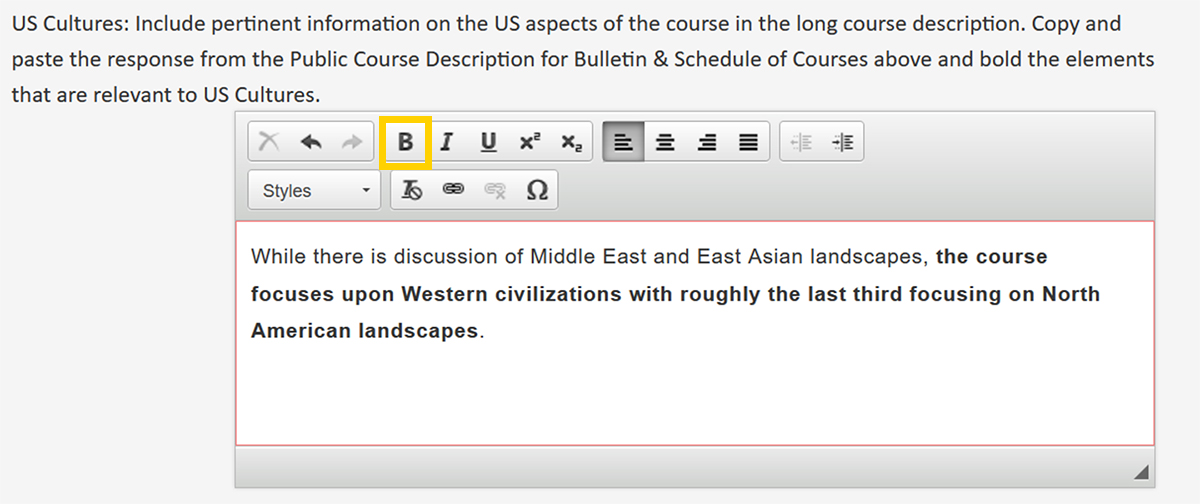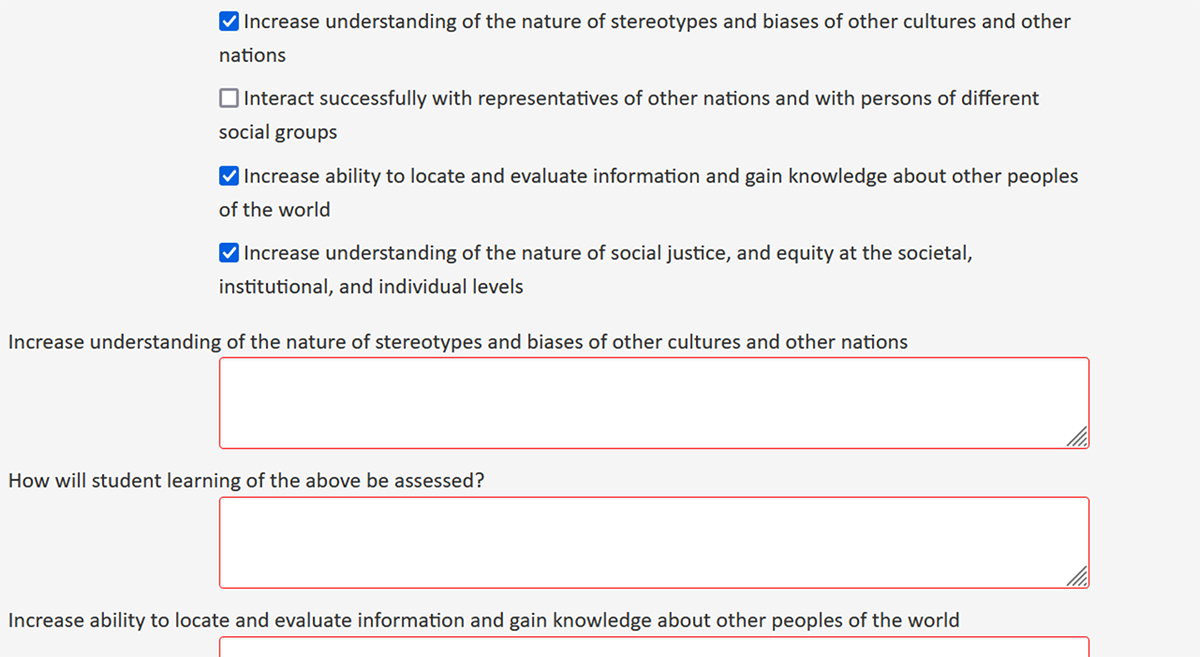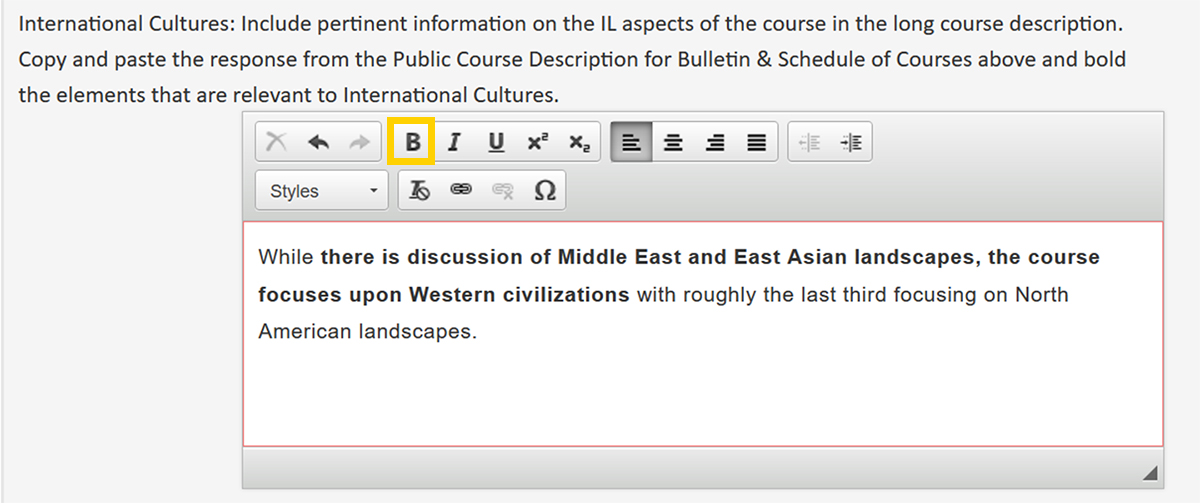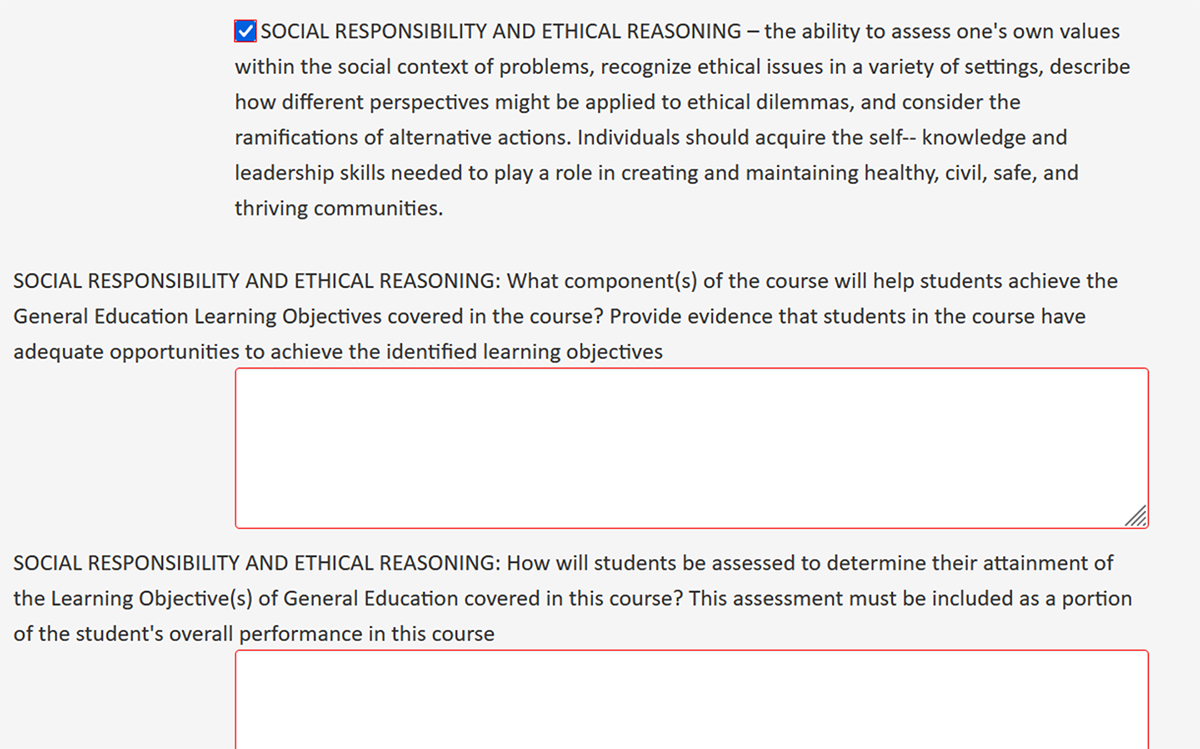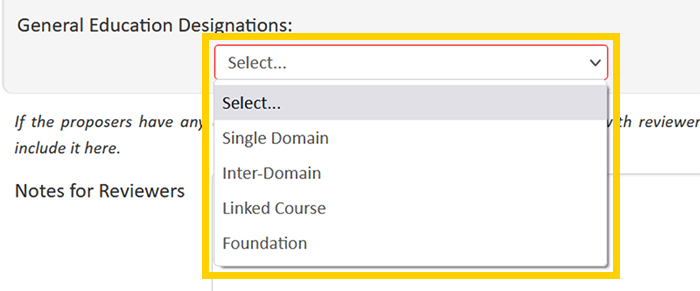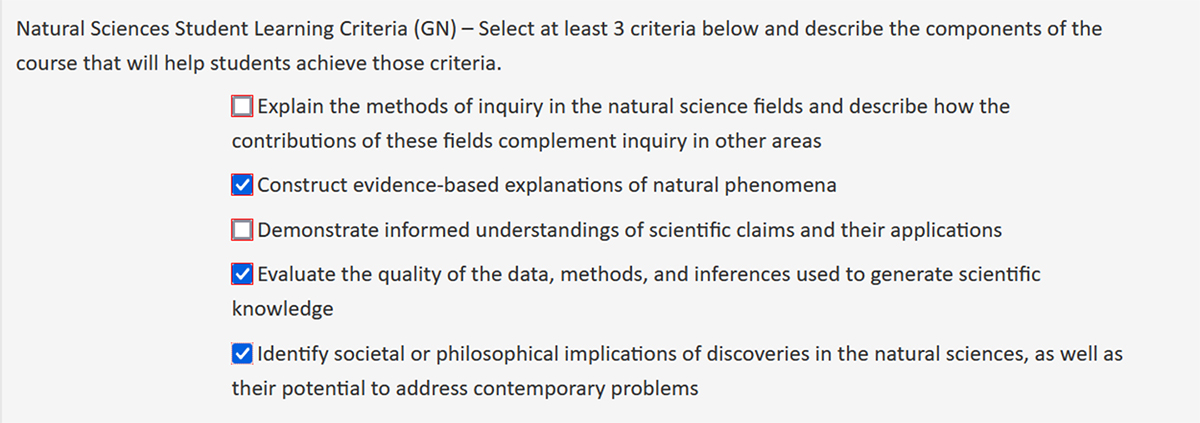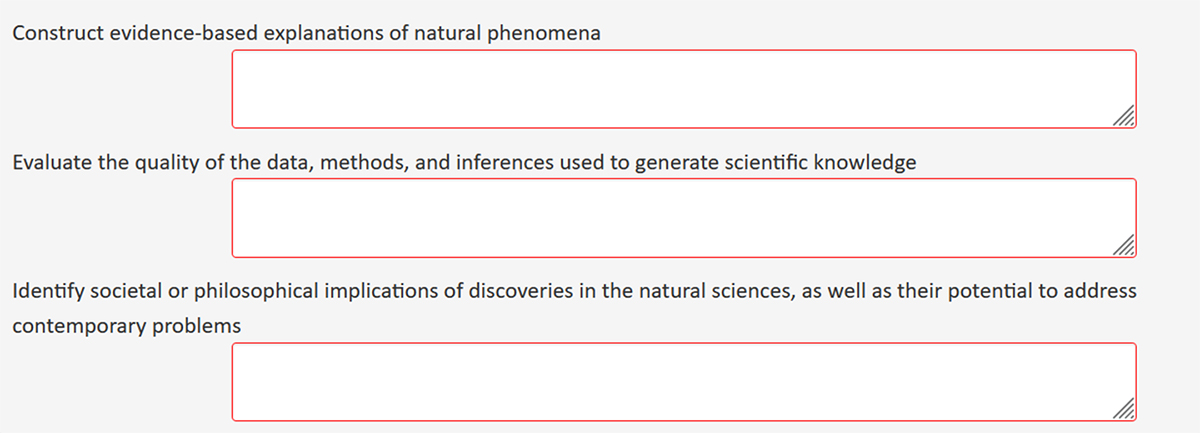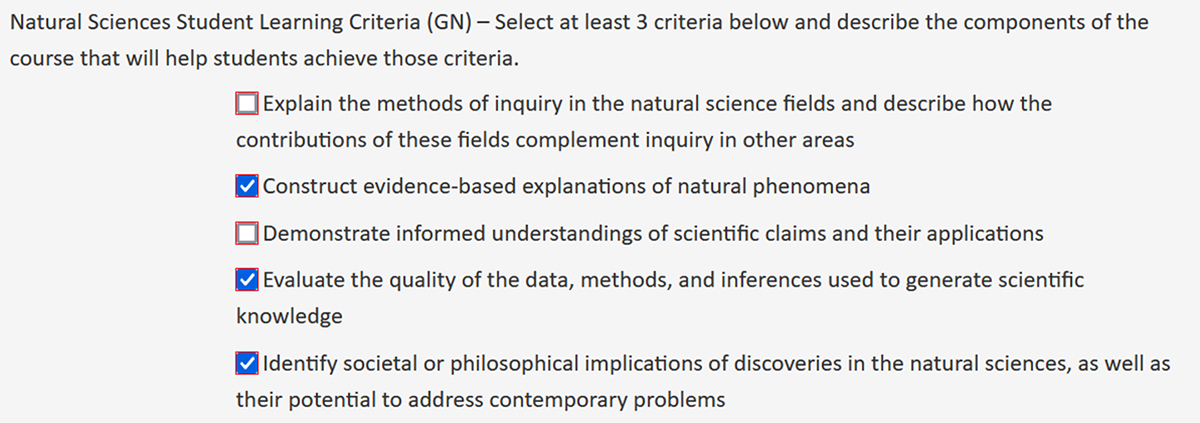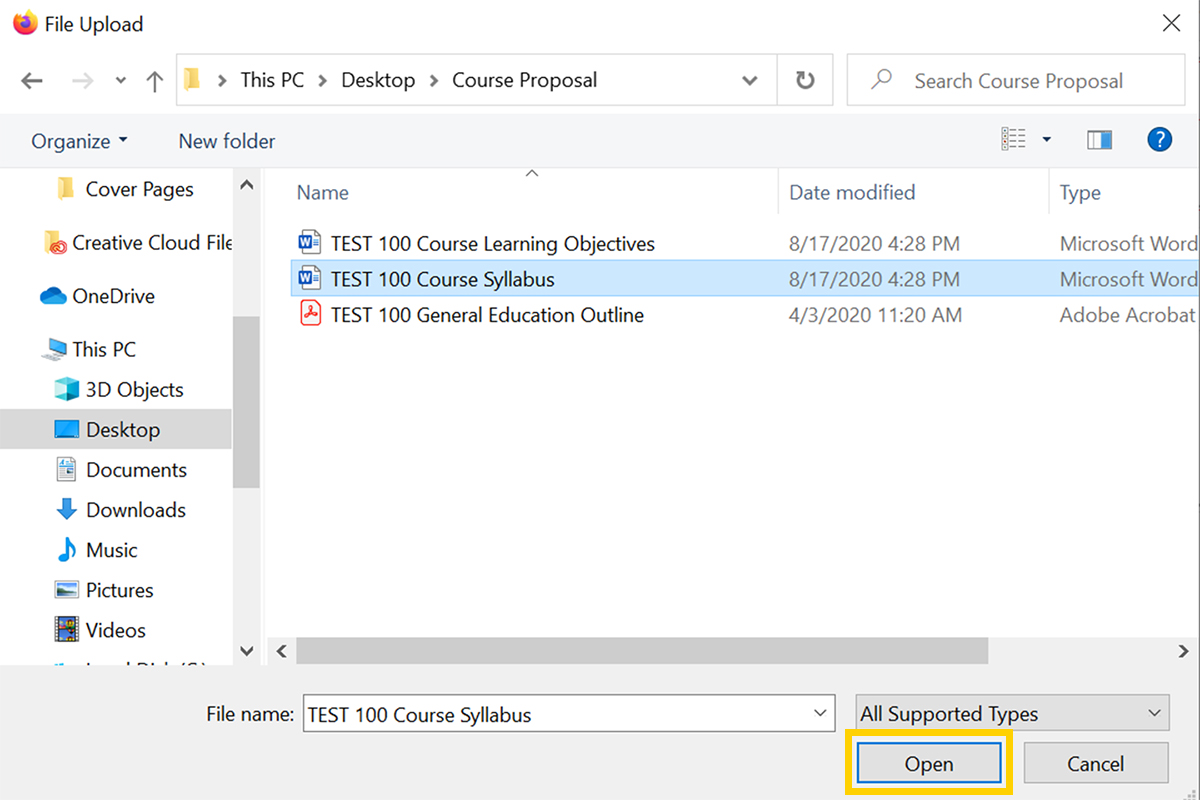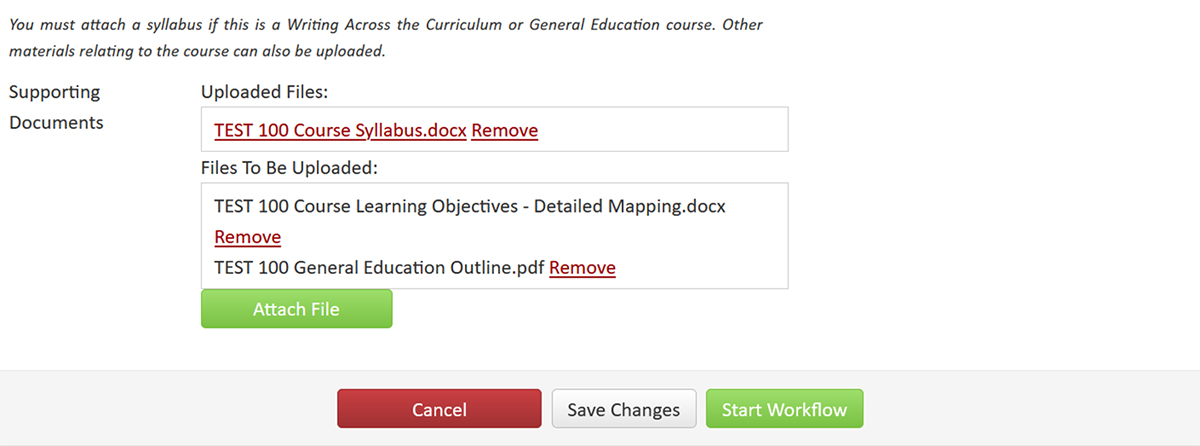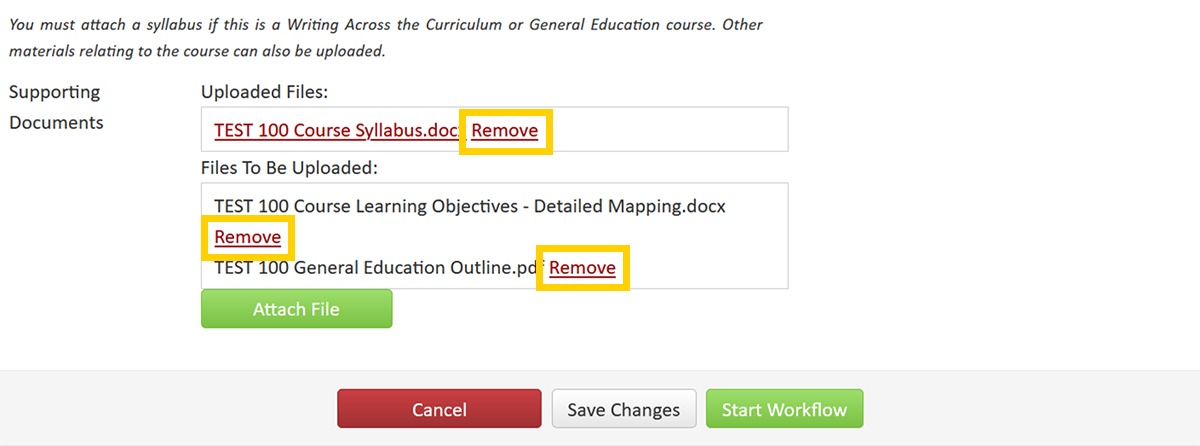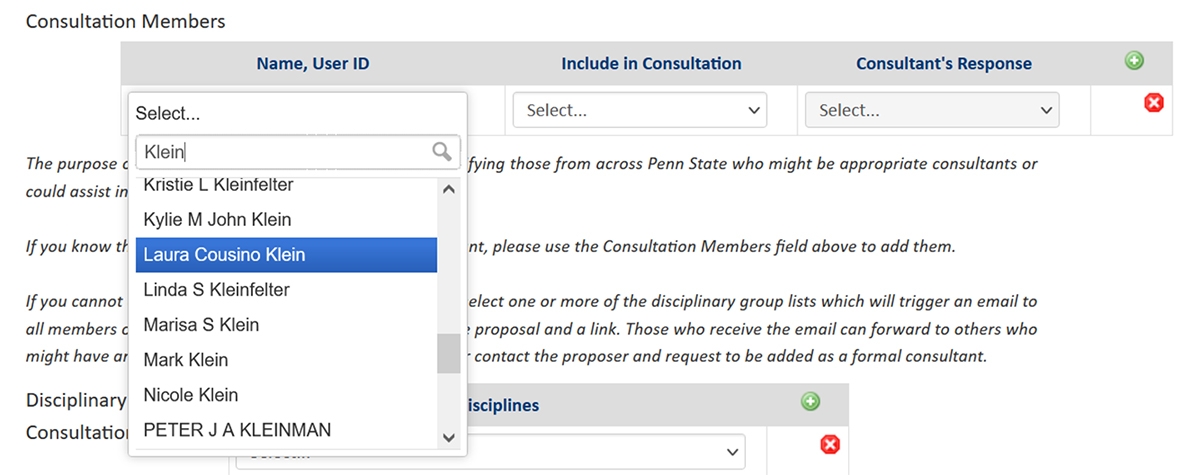How to Propose a New Course
The instructions below explain how to successfully complete the proposal form for a new course. This includes credit courses, credit common courses, and non-credit courses. If you want to edit an existing course, please follow the instructions for how to submit a proposal to change an existing course. If you want to drop a course, please follow the instructions for how to submit a proposal to drop a course.
1. Navigate to the Course Proposal Form
Go to the CourseLeaf CIM Course Management dashboard at: https://psu-next.courseleaf.com/courseadmin/.
Log in with your Penn State user ID and password.
A dialog box will appear requesting that you complete your login to CourseLeaf. Click the circle icon in the dialog box to proceed to the CourseLeaf CIM Course Management dashboard.
Once logged in, you will see the CourseLeaf CIM Course Management dashboard. Click the Propose New Course button to open a new proposal form to propose a new course.
The course proposal form will open in a new browser window.
2. Complete the Form
The CIM course proposal form is a large form with several fields, which are described below. Before starting on a new course proposal form, please read the following tips and guidelines to help you successfully navigate form features and requirements.
Dynamic Form
The CIM course proposal form is a dynamic form. The fields that appear on the form will change depending on your answers to certain questions. For example, if you select "Undergraduate" for the Academic Level, a new section for General Education designation will appear further down in the form. This section will not appear when any other academic level is selected.
Required Fields
Fields that are required are outlined in red. You cannot start workflow (i.e., begin the review and approval process) on your proposal until all required fields have been completed. You can, however, save changes to your incomplete proposal and return to complete and submit the form later.
Instructions
Instructions for each question appear in italics above the question heading and field. Please read these instructions carefully before entering your information into the form.
Cancel, Save Changes, Workflow Buttons
You can save your changes to the proposal form at any time by clicking the Save Changes button at the bottom of your screen. This will save all changes made but will not submit the proposal to the approval workflow process. Saving changes allows you to come back to your proposal and finish editing at a later date.
Clicking the Cancel button will close the proposal without saving any changes made.
Once your proposal is finished and ready to begin the review process, click the Start Workflow button to submit the proposal to the approval workflow process.
Form Fields
Many of the CourseLeaf CIM course proposal form fields are the same for both undergraduate and graduate courses. The listing below displays all form fields for undergraduate courses. Instructions on graduate-specific form fields can be found on The Graduate School website.
From the dropdown menu, select the appropriate degree level of the new course (e.g., Undergraduate, Graduate, Dickinson Law, Penn State Law, Medicine, Physician Assistant, Non-Credit).
Enter a brief summary of the new course proposal. This summary will be included in the email notification to consultants and other reviewers to help them determine if it is necessary to review the full proposal.
"Common course" is the designation given to courses that are common across many programs, including research projects, internships (including practicums and field experience), independent studies, special topics, foreign studies, colloquium, thesis research, Ph.D. dissertation, and capstone. These courses adhere to a common course numbering system (e.g., 97, 98, 99, 187, 197, 198, 199, etc.), as defined by the University Faculty Senate. The full list of available common course numbers can be found in the University Bulletins within the Common Course Numbers section. Once approved, these courses are available for offering on a semester-by-semester basis.
If this proposal is for a common course, select Yes.
If the course proposal is for a common course, you can choose to start from scratch with a blank proposal form or you can choose to import information from an existing course and then modify the appropriate fields for your course proposal as needed.
Proposals for Common Courses only need to provide information for the following form fields:
- Academic Level
- Proposal Summary
- Principal Faculty Member
- Were any other faculty members responsible for the development of the course?
- Proposer's Home College
- College
- Unit
- Course Abbreviation
- Course Number
- Course Title
- Abbreviated Title
- Min Credits/Max Credits
- Repeatable
- Public Course Description for Bulletin & Schedule of Courses
- Notes for Reviewers
- Supporting Documents
Enter the minimum and maximum number of credits this course may be scheduled for each time it is scheduled.
For courses with a fixed number of credits, enter the same value in the Min Credits and Max Credits field (e.g., a 3-credit course should have "3" entered in both fields).
For courses with variable credits, enter the minimum number of credits the course may be scheduled for in the Min Credits field and the maximum number of credits the course may be scheduled for in the Max Credits field. (e.g., a 3-4 credit course should have "3" entered in the Min Credits field and "4" entered in the Max Credits field.)
Repeatable courses are those in which a student can enroll more than once for credit up to the specified number of total maximum credits for the course. Typically, these courses will appear in the LionPATH Course Catalog and Bulletin Course Descriptions with the maximum number of credits allowed following the number of credits for the course (e.g., 1.5 credits/maximum of 3). A course with a credit value of "2 credits/maximum of 8" can be taken four semesters for 2 credits each semester. A course with a credit value of "1-2 credits/maximum of 2 credits" can be taken one semester for 2 credits or two semesters for 1 credit each semester.
Most courses are not repeatable. This designation is typically used for courses such as independent study, research courses, music ensembles, etc. Please note, this designation is not referring to the ability of a student to repeat the course in an attempt to earn a higher grade.
If the course is repeatable, select Yes.
If you select Yes, two additional form fields will appear:
Total Maximum Credits
Enter the maximum number of credits allowed for the course.
Allow Multiple Enrollments in a Term
Select Yes if a student may enroll in multiple sections or offerings of the same repeatable course at the same time. Select No if a student may only enroll in one section or offering.
If you select Yes, one additional form field will appear:
Description of the travel component
Provide a description of what the travel entails.
Enter the course abbreviation and number as well as the corresponding college and unit for all courses that will be cross-listed with the proposed course:
Click on the Add... link next to the Cross-Listed Courses field.
In the new window that opens:
- Select the course abbreviation for the cross-listed course.
- Enter the course number of the cross-listed course.
- Select the college that will be offering this cross-listed course.
- Select the unit within the college that will be offering this cross-listed course.
- Click the OK button once all information is entered.
If you enter a course number that is currently in use, you will receive the error message: Course code is not unique when you click the OK button. If this occurs, please enter a different, unused course number.
Repeat the process to add additional cross-listed courses. Each course added will be listed within the Cross-Listed Courses section with the following options:
- Remove: Click the Remove button to remove the course as a cross-listed course. If you click this button, a strikethrough line will appear through the course along with a new Reactive button. Click the Reactive button to reinstate the course as a cross-listed course.
- Edit: Click the Edit button to reopen the Enter Course Code window to modify the course abbreviation, course number, college, and/or unit.
- Make Primary: Click the Make Primary button to designate the cross-listed course as the primary course of the proposal. When you click the Make Primary button, the course information for this cross-listed course will populate the primary course abbreviation, course number, college, and unit fields that were entered in the previous section. In turn, the original primary course now will appear under Cross-Listed Courses.
Enter the course description (maximum 400 words), which will be published in the online University Bulletins and the Schedule of Courses. Encompassing all course sections at all locations over a period of time and, this single description should focus on the common and durable aspects of the course.
Please note, non-credit courses are not published in the online University Bulletins.
Course Learning Objectives define what the student is expected to learn and what skills the student will develop. The objectives should be measurable. Examples of measurable learning objectives can be found at: Schreyer Institute for Teaching Excellence's General Goals and Explicit Objectives.
Enter one course learning objective per line.
To add a new course learning objective, click the Green Plus Sign Button in the form field header to add a new row. Enter the new course learning objective.
To delete a course learning objective, click the Red X Button to the right of the row.
To reorder the course learning objectives, click the Green Arrow Up and Arrow Down Buttons to the right of the rows. Click the Up Arrow Button to move a row up. Click the Down Arrow Button to move a row down.
Enter a list of the major topics covered in the course and include the approximate length of time each topic will be discussed. Please enter the time allotted to each topic in hours, rather than in weeks or by number of lectures. A typical 3-credit course requires a total 45 hours of instruction. Additional information about credit requirements can be found in Senate Policy 42-23 Credit Requirements by Types of Instruction.
Enter a description of the type(s) of student cohorts this course is designed to teach.
Attributes are course designations used to define specific characteristics for courses.
To add an Honors, Bachelor of Arts, United States Cultures (US), International Cultures (IL), Writing Across the Curriculum, and/or First-Year Seminar attribute to this course, select Yes next to the appropriate designation(s).
Please note that courses with the Honors, Writing Across the Curriculum, and First-Year Seminar attributes require the use of the appropriate suffix with the course number. A guide to suffix use can be found in the University Course Description section of the University Bulletins.
If Yes is selected for an attribute, an additional field or fields will appear requesting information to justify the designation of this course with the selected attribute.
The additional information requested is as follows:
To add a General Education attribute to this course, select Yes next to General Education.
If you select Yes, additional fields will appear requesting information to justify the designation of this course with a General Education attribute.
Enter any additional information about the course proposal not covered in the form fields above. Additional notes can be added to this field as the proposal moves through the review process.
Upload supporting documentation related to the course as needed. Writing Across the Curriculum and General Education courses require the attachment of a syllabus.
To upload an attachment, click the green Attach File Button.
A File Upload window will open. In the window, navigate to the location of the document to upload on your computer, select the document and click the Open Button.
The selected document will appear in the Files to be Uploaded box.
To complete the file upload, click the Save Changes Button.
The uploaded file now appears in the Uploaded Files box.
To add additional files, repeat the Attach File and Save Changes process. Please note, multiple files can be added to the Files to be Uploaded box before saving changes.
To remove a file, click the red Remove link next to the file to be removed.
Consultation should be requested from all units with a known interest in the subject field, not simply those in the same college. Consultation also should be requested from any other programs listed in the proposal as potentially affected by the course.
To add Consultation members, enter the name or user ID of each individual to be consulted.
For best results when entering a name, type the individual's last name in the form field. As you begin to type, a list of suggestions from the Penn State directory will pop up, from which you can select.
The selected individual's name will be added. For the initial round of consultation, select Include in the Include in Consultation field for all added consultants. For additional rounds of consultation, the existing consultants can be either Included or Excluded by selecting Consultation Sent, depending on whether they need to be consulted again. Consultants being added for the first time must have Include selected.
The Consultant's Response field will appear disabled at this point since the response will be selected by the consultant upon review of the proposal.
For each consultant listed, enter the unit the individual works in/represents in the Consultant Unit field. This will assist reviewers in determining if all units with a known interest in the subject field have been consulted.
To add another person, click the Green Plus Sign Button in the form field header to add a new row. Enter the name or user ID of that person.
To delete a row, click the Red X Button to the right of the row.
Disciplinary group lists are comprised of individuals within a specific academic discipline. When a disciplinary list is selected for consultation, all members on that list will be sent an email containing a short description of and link to the course proposal. Individuals who receive the email can: 1) forward it to others who might have an interest in the proposal; 2) comment directly in the proposal; or 3) contact the proposer and request to be added as a formal consultant.
View the List of Disciplinary Groups and Their Members
To add a disciplinary group list, select a discipline from the dropdown menu.
To add another disciplinary list, click the Green Plus Sign Button in the form field header to add a new row. Select a discipline from the dropdown menu.
To delete a row, click the Red X Button to the right of the row.
Once you have completed the course proposal form, click the green Start Workflow Button at the bottom of your screen to begin the review process. The proposal will be sent to the first step in the approved workflow.
Note: You cannot start workflow on your proposal until all required fields have been completed.
You will be returned to the main CourseLeaf CIM Course Management dashboard, with a preview of your proposal and the workflow for the course drop proposal.
3. Workflow
The automated approval process in CIM is called the workflow. Once you click the green Start Workflow Button, your proposal will begin this approval process.
The required workflow steps are defined by each academic college. As reviewers in each step approve the proposal it will move to the next step of the workflow. As the proposal moves to the next workflow step, the appropriate user(s) will be notified via an automated email that the new course proposal is ready to be reviewed, edited, approved, or rejected.
You can log in to the CourseLeaf CIM Course Management dashboard at any time to see where your proposal is in the workflow process. Once you have located your proposal in the dashboard, the preview will include the full list of workflow steps the proposal must complete. The current workflow step for the proposal will be in bold orange text. Completed workflow steps will be in bold green text.
At any point in the approval process a reviewer might have questions about the proposal. You will have the opportunity to address these questions and/or provide additional information about your proposal at various steps throughout the workflow. You cannot directly edit your proposal until it returns to you in the workflow process. You will be notified via email when the proposal has reached the workflow step for you to review and address reviewer feedback.
A reviewer may also choose to rollback the proposal to a previous step in the workflow. In this case, the proposal will need to repeat the workflow steps from the point the proposal was rolled back to.
More information about proposal review can be found in the Workflow Management User Guide section.
4. Sync with LionPATH Course Catalog
Once the proposal has been fully reviewed and approved, the last step of the workflow (PeopleSoft) is an automated sync process to add the course to the LionPATH Course Catalog. Some course data, such as enforced prerequisite information, will be manually added by the Office of the University Registrar once the course is added to LionPATH. The effective semester for the course will be determined by the Office of the Faculty Senate based on the timing of the final approval.
Note: The LionPATH sync process does not add the course to the LionPATH Schedule of Classes or schedule course offerings of the course. It only adds the course to the LionPATH Course Catalog. Class Scheduling is a separate process managed by the Office of the University Registrar each semester. For questions about class scheduling, please contact your unit's designated class scheduler(s).
5. Notification of Approval
Once the proposal has completed the approval process, the proposer will receive an automated email message notifying you of the proposal approval.


